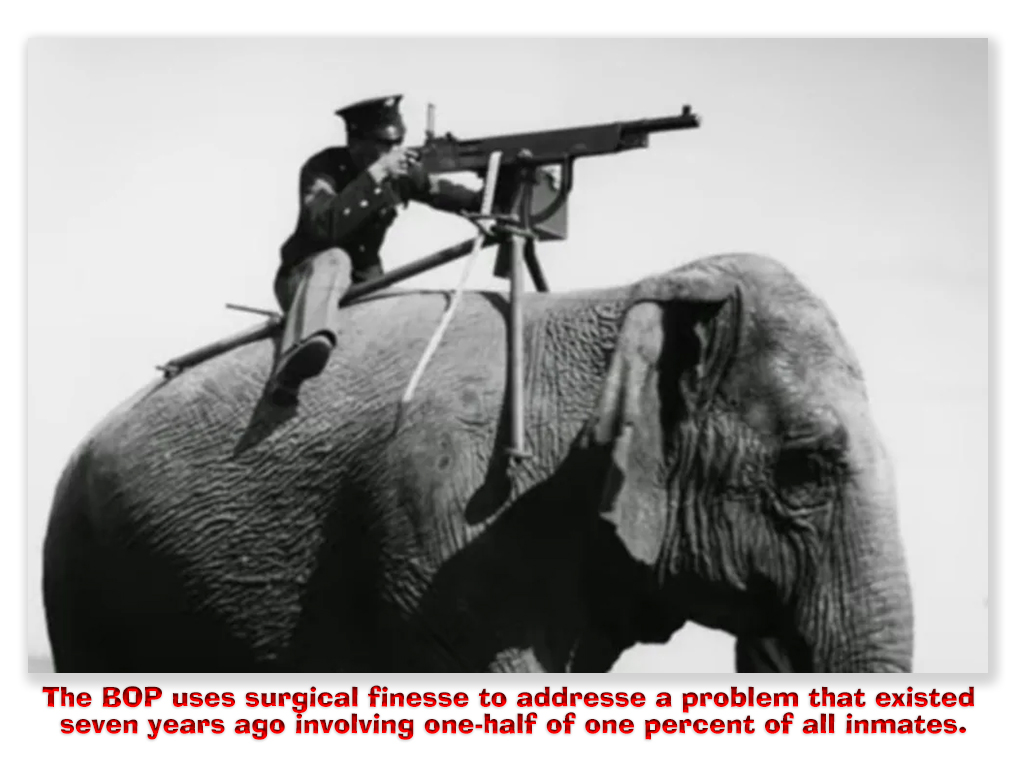We post news and comment on federal criminal justice issues, focused primarily on trial and post-conviction matters, legislative initiatives, and sentencing issues.

A CINCINNATI GUN SHOW
The 6th Circuit last week wasted no time finding practical applications for its August holding in United States v. Williams that while 922(g) may not categorically disqualify everyone within its prohibitions on firearms ownership, it does when dangerousness is involved.
 Williams established that felons are among “the people” protected by the 2nd Amendment. Williams held that consistent with the 2nd Amendment, “our nation’s history and tradition demonstrate that Congress may disarm individuals they believe are dangerous,” and so “most applications of § 922(g)(1) are constitutional.” Applying that standard to defendant Williams, the panel concluded that the defendant’s § 922(g)(1) felon-in-possession conviction was constitutional in light of his extensive criminal record, which included aggravated robbery and attempted murder.
Williams established that felons are among “the people” protected by the 2nd Amendment. Williams held that consistent with the 2nd Amendment, “our nation’s history and tradition demonstrate that Congress may disarm individuals they believe are dangerous,” and so “most applications of § 922(g)(1) are constitutional.” Applying that standard to defendant Williams, the panel concluded that the defendant’s § 922(g)(1) felon-in-possession conviction was constitutional in light of his extensive criminal record, which included aggravated robbery and attempted murder.
After Williams, defendants may still argue that their facts make them an individualized exception to the application of § 922(g)(1). That’s what Christopher Goins argued. He was on probation for a state felony when he had a friend buy him two AR-15 frame pistols at a gun store. Chris took possession of the firearms in the gun store parking lot in full view of surveillance cameras.
At the time Chris took delivery of the gun, he had multiple convictions for crimes punishable by imprisonment for more than one year, including a DUI, driving under the influence on a suspended license, and possession of drugs. A state court had initially sentenced Chris to one year of jail time for each of the three offenses, but it then withheld the sentence and instead gave Chris to 120 days of imprisonment and four years of probation. One condition of probation was that Chris could not possess a weapon of any kind.
The 6th upheld Chris’s § 922(g)(1) conviction, finding that the nation’s “historical tradition demonstrates that Congress may lawfully disarm probationers like Goins, who (1) are under a firearm possession limitation as a condition of probation, (2) are under a relatively short probation sentence for a dangerous crime, and (3) whose repeated and recent actions show a likelihood of future dangerous conduct.”
 The same day, another 6th Circuit panel ruled that Jaylin Gore’s conviction for possessing a stolen gun (18 USC 922(j)) and receipt or transfer of a gun while under indictment (922(n)) was consistent with the 2nd Amendment.
The same day, another 6th Circuit panel ruled that Jaylin Gore’s conviction for possessing a stolen gun (18 USC 922(j)) and receipt or transfer of a gun while under indictment (922(n)) was consistent with the 2nd Amendment.
The Circuit ruled that “there is ample historical support for prohibitions on the purchase or receipt of stolen goods and “there is no indication that firearms were exempt from such laws.”
As for prohibiting receipt or transfer of a gun while under indictment, the 6th ruled, “§ 922(n)’s prohibition is comparable to the founding-era history of pretrial detention ‘in both why and how it burdens the 2nd Amendment right… Like pretrial detention, § 922(n) restricts indicted persons’ rights during the fraught period between indictment and trial, for the purpose of furthering public safety and protecting the integrity of the criminal process. And just as bail was denied outright only for defendants facing serious charges, so § 922(n) is triggered only by indictment for a felony charge… So for those who already possess one or more firearms, § 922(n) represents only a slight burden on the 2nd Amendment right; and even for those who do not, § 922(n)’s prohibition is a lesser burden than detention or permanent disarmament.”
Finally, the 6th held last Thursday that Sylvester Gailes, a guy described as a “serial perpetrator of domestic violence,” could not use the 2nd Amendment to avoid his § 922(a) conviction. Sly had repeatedly beaten the mother of his children (occasionally doing so in the presence of the kids). He had been convicted of multiple domestic violence misdemeanors.
Under 18 USC § 922(g)(9), someone convicted of a misdemeanor crime of domestic violence is prohibited from possessing a gun.
The Circuit ruled that “domestic violence convictions generally involve some sort of physical force… When the presence of a gun accompanies the use of physical force, the likelihood that abuse turns to homicide greatly increases… It is no surprise then that Congress sought to deprive people with domestic violence convictions from possessing firearms.”
 The 6th held that “[t]aken together, Rahimi [which held that someone subject to a domestic protection order] and Williams evince that our history and tradition of firearm regulation support § 922(g)(9). Although § 922(g)(9) is by no means identical to the historical sources above or a founding-era regime, it does not need to be. The historical sources cited in Rahimi and Williams establish the constitutionality of modern firearms regulations targeting those who pose a clear threat of physical violence to another.
The 6th held that “[t]aken together, Rahimi [which held that someone subject to a domestic protection order] and Williams evince that our history and tradition of firearm regulation support § 922(g)(9). Although § 922(g)(9) is by no means identical to the historical sources above or a founding-era regime, it does not need to be. The historical sources cited in Rahimi and Williams establish the constitutionality of modern firearms regulations targeting those who pose a clear threat of physical violence to another.
United States v. Williams, 113 F.4th 637 (6th Cir., 2024)
United States v. Goins, Case No 23-5848, 2024 U.S.App. LEXIS 25355 (6th Cir., October 8, 2024)
United States v. Gore, Case No 23-3640, 2024 U.S.App. LEXIS 25361 (6th Cir., October 8, 2024)
United States v. Gailes, Case No 23-5928, 2024 U.S.App. LEXIS 25571 (6th Cir., October 10, 2024)
– Thomas L. Root


 The new restrictions, which Peters said was a result of “[t]he rise in illicit substances sent to incarcerated individuals through US mail,” will require that all incoming general correspondence must be on plain white paper and in a white envelope. No glitter, labels, stickers, perfume, lipstick, crayon, or marker will be accepted.
The new restrictions, which Peters said was a result of “[t]he rise in illicit substances sent to incarcerated individuals through US mail,” will require that all incoming general correspondence must be on plain white paper and in a white envelope. No glitter, labels, stickers, perfume, lipstick, crayon, or marker will be accepted.


 The
The 












